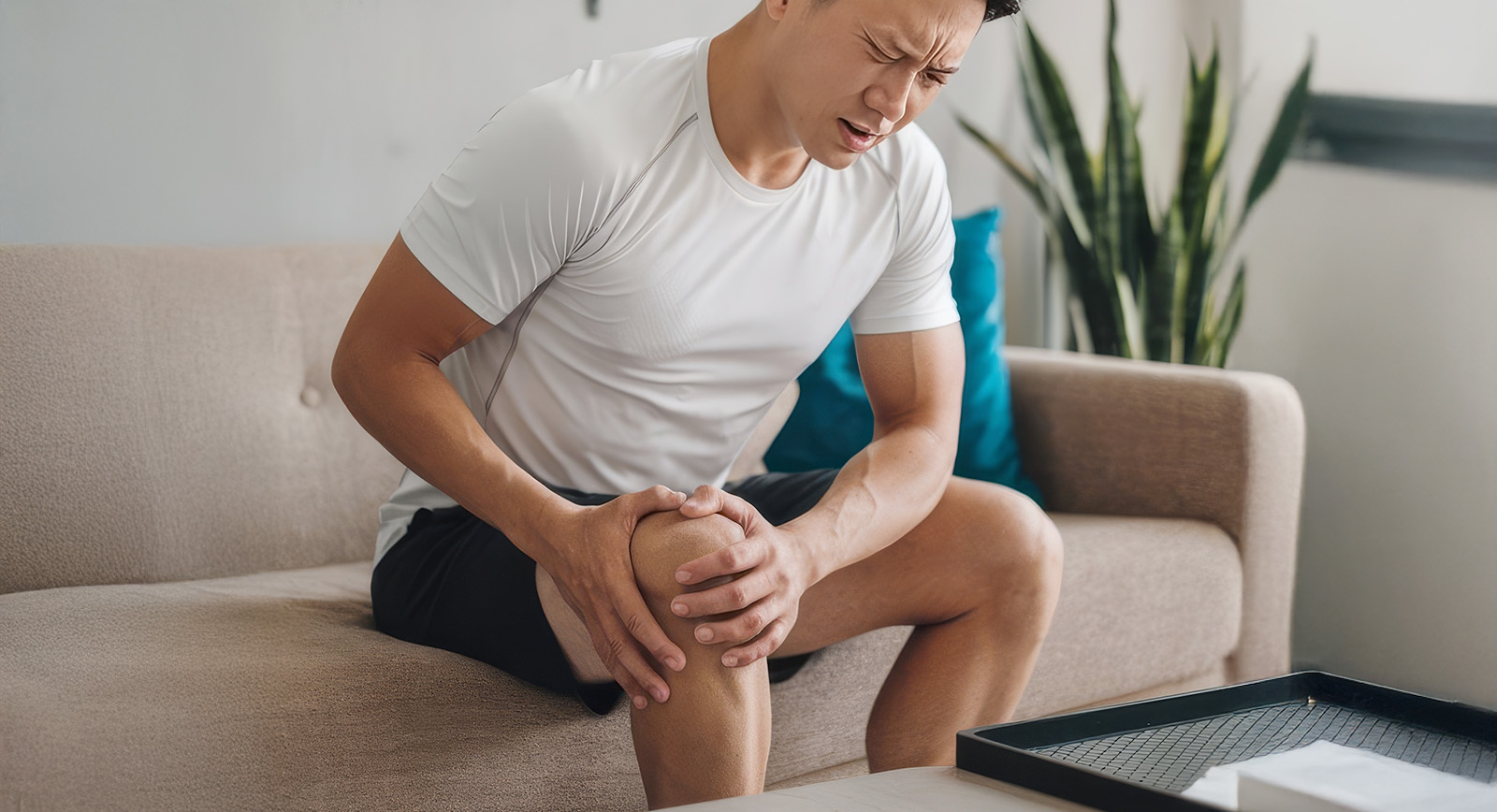RegenPRP® Therapy for Tendinopathy

INTRODUCTION
Chronic tendon injuries—collectively known as tendinopathies—can be debilitating and frustrating to manage. Whether you’re a high-performance athlete or someone simply looking to return to pain-free movement, traditional conservative treatments often fall short when tendons fail to heal completely.
At The Clifford Clinic, we understand how disruptive tendon pain can be and are proud to offer a scientifically validated, regenerative solution: RegenPRP® (Platelet-Rich Plasma) therapy.
What is Tendinopathy?
RegenPRP® represents a leukocyte-reduced PRP system, engineered to enhance tendon healing through high concentrations of viable platelets and minimal pro-inflammatory cells. Backed by clinical research and precision Swiss engineering, this therapy enables your body to repair and regenerate tendon tissues naturally—without synthetic drugs or surgery.
Tendinopathy is often a result of degenerative changes, not active inflammation. Key contributing factors include:
- Repetitive Strain & Mechanical Overload: Overuse leads to micro-damage; tendons struggle to repair due to poor blood supply
- Aging & Cellular Dysfunction: Tendon stem/progenitor cells lose regenerative capacity, producing less collagen type I and more fragile type III collagen.
- Failed Healing Cycles: Chronic cycles of damage and inadequate repair result in disorganized extracellular matrix and structural weaknesses.
Pathology overview: Clinical imaging often shows reduced collagen fiber alignment, increased type III collagen deposition, and neovascularization—hallmarks of chronic tendinopathy .
- Tendinopathies most commonly affect:
- Achilles tendon
- Patellar tendon (jumper’s knee)
- Lateral epicondyle (tennis elbow)
- Rotator cuff (shoulder)
- Plantar fascia
- Gluteal tendons (hip)
These conditions often present as pain, stiffness, weakness, and decreased range of motion—compromising quality of life and athletic performance.

What is the solution?
RegenPRP® (leukocyte-reduced platelet-rich plasma) is a regenerative treatment that uses your body’s own blood to accelerate healing. By concentrating platelets (which contain key growth factors) and minimizing white blood cells that contribute to inflammation, RegenPRP® enhances tendon repair at a cellular level.
The PRP is prepared using RegenKit®, a patented closed-circuit centrifugation system that separates and concentrates platelets efficiently.
Key features of RegenPRP® include:
- Over 90% platelet recovery
- More than 85% depletion of pro-inflammatory granulocytes
- Almost complete removal of red blood cells
- Fully autologous, reducing risk of rejection or allergy
This biologically potent plasma is then injected into the affected tendon under ultrasound guidance, stimulating repair via:
- Stem cell migration and activation
- Collagen synthesis
- Neoangiogenesis (new blood vessel formation)
- Scaffold formation for tissue regrowth
Unlike steroid injections which provide short-term pain relief, PRP heals the underlying tendon pathology over time.
Clinically proven, Synolis VA has outperformed other hyaluronic acid injections in reducing knee pain and improving function.

Benefits of RegenPRP® Therapy
RegenPRP® has demonstrated long-term improvements in tendon function and pain across several clinical studies. Patients treated for Achilles, patellar, and elbow tendinopathies showed sustained gains in mobility, VISA scores (Victorian Institute of Sport Assessment), and patient-reported outcomes for up to 24 months post-treatment.
Documented Benefits:
- Biological healing rather than symptomatic masking
- Reduced pain and improved functional scores (VISA-A, VISA-P)
- Decreased tendon irregularities on ultrasound scans
- Fewer adverse events than corticosteroids or surgery
- Personalized rehabilitation integration
Synolis VA reinvigorates degenerated knee joints by restoring viscoelasticity and reducing friction on cartilage surfaces.
Compared to traditional HA therapies, Synolis VA offers enhanced viscosity retention for sustained knee pain improvement.
Who Is Suitable for RegenPRP®?
This treatment is ideal for patients who:
- Have chronic tendinopathy unresponsive to conservative treatments (e.g., rest, physiotherapy, NSAIDs)
- Wish to avoid or delay surgery
- Have experienced relapse after corticosteroid injections
- Are looking for a natural, autologous treatment option
- Need a long-term solution rather than temporary pain relief
It is particularly well-suited for:
- Athletes suffering from overuse injuries
- Middle-aged individuals experiencing degenerative tendon changes
- Active adults wanting to maintain mobility and performance
Individuals with recurring injuries or incomplete healing
- Have chronic tendinopathy unresponsive to conservative treatments (e.g., rest, physiotherapy, NSAIDs)


Not suitable for:
- Patients with active infections
- Those with blood disorders affecting platelet function
- Patients on anticoagulants or immunosuppressive therapy (must be evaluated case-by-case)
A detailed consultation with our doctors at The Clifford Clinic ensures eligibility is assessed accurately.
Take the first step toward pain-free movement—speak to our specialists about Knee Fillers
The RegenKit® THT System: Standardized PRP Preparation with Swiss Precision
The RegenKit® THT system is a certified medical device engineered specifically for the safe, efficient, and reproducible preparation of RegenPRP®. Manufactured to the highest quality standards, it ensures that every PRP sample processed yields a consistent therapeutic concentration—critical for both research and clinical success.
Composition and Design
RegenKit® THT consists of specialized vacuum-sealed glass tubes made from pharmaceutical-grade borosilicate, a material chosen for its durability, biocompatibility, and ability to maintain sterility. These tubes are pre-filled with:
Sodium Citrate Anticoagulant Solution:
Prevents premature coagulation by chelating calcium ions in the blood, thereby preserving the platelets’ bioactivity and functional integrity throughout the centrifugation process.
Thixotropic Separating Gel:
Upon centrifugation, this specialized gel forms a stable physical barrier between the cellular components (e.g., red blood cells and most leukocytes) and the plasma layer, which contains the platelets and other beneficial proteins. This separation is crucial for producing leukocyte-reduced PRP with minimal contamination and inflammation-inducing components.


What to Expect During Treatment
Step-by-step overview:
- Consultation & Diagnosis
- Comprehensive musculoskeletal exam
- Ultrasound imaging for tendon assessment
- Blood Draw
- ~10 ml of your blood is collected
- Centrifugation
- RegenKit® device isolates and concentrates PRP (90%+ recovery rate)
- Injection
- PRP is injected precisely into the damaged tendon under ultrasound guidance
- Rehabilitation Plan
You will receive a customized exercise protocol to enhance regeneration
Number of Sessions:
- Typically 3 injections at weekly intervals
- Additional boosters can be tailored to your healing progress
Downtime:
- Minimal downtime; most patients return to light activity within 24–48 hours
- Heavy lifting or sports should be paused for 1–2 weeks post-injection
Side Effects:
- Mild soreness, redness, or swelling at the injection site
- No allergic reactions (autologous nature)
No systemic side effects like with corticosteroids
RegenPRP® for Tendinopathies
RegenPRP® has been clinically evaluated for multiple types of chronic and non-insertional tendinopathies, showing promising outcomes across a variety of anatomical sites.
Types of Tendinopathies Studied:
- Chronic Tendinopathies
- Non-Insertional Tendinopathies (in comparison to enthesopathies)
- Gluteus Tendon Tendinopathy
- Shoulder Supraspinatus Tendinopathy
Foot Plantar Fascia Tendinopathy
Specific Clinical Research Focus:
- Achilles Tendinopathy
- Patellar Tendinopathy


Achilles Tendinopathies
Objective:
To evaluate the effectiveness of RegenPRP® in treating recalcitrant non-insertional Achilles tendinopathies, and to assess whether patient age influences treatment outcomes.
Protocol:
- Study Design: Retrospective study
- Participants: 44 patients unresponsive to conservative treatment
- Treatment Course: 3 RegenPRP® injections (4 ml each), administered at weekly intervals
- Injection Method: Multiple sites in the degenerated tendon, performed:
- Under ultrasound guidance (US)
- In sterile conditions
- Without anaesthesia
- Evaluation Tool:
Victorian Institute of Sports Assessment–Achilles (VISA-A) questionnaire, measured at: - Baseline
- 1 month
- 3 months
- 6 months
- 12 months
- Patient Cohorts: Divided by age:
- Young: <55 years old
- Elderly: >55 years old
Results:
A consistent and statistically significant increase in VISA-A scores was observed in both age groups across all follow-up time points.
Younger patients (<55 years) showed more pronounced improvement, suggesting age may influence regenerative responsiveness.
Why Visit Clifford Orthopaedics?
As one of Singapore’s medical centres for effective regenerative and aesthetic treatments, The Clifford Clinic is uniquely positioned to deliver RegenPRP® therapy with precision, safety, and personalisation.
Why choose us:
- Physician-led ultrasound-guided injections for maximum accuracy
- Multidisciplinary pain and rehab support, including sports doctors and physiotherapists
- Extensive experience with musculoskeletal ultrasound
- In-house access to advanced imaging and lab processing
- Patient-centric protocols tailored to recovery goals
Every injection is done under strict sterile conditions, leveraging RegenLab’s Swiss-engineered technology while delivering personalised care—because no two tendons are the same.
Frequently Asked Questions
How does RegenPRP® differ from standard PRP therapies for tendinopathy?
RegenPRP® is a patented, leukocyte-reduced platelet-rich plasma system that delivers a more refined and consistent product compared to standard PRP. While traditional PRP may contain varying concentrations of white blood cells (which can increase inflammation), RegenPRP® removes over 85% of pro-inflammatory granulocytes and nearly all red blood cells. This results in a cleaner plasma that focuses on growth factor delivery without exacerbating tissue irritation. The RegenKit® technology also ensures closed-circuit preparation, minimising contamination and producing a reproducible formulation ideal for chronic tendinopathies.
What types of tendinopathies respond best to RegenPRP® therapy?
RegenPRP® has shown significant benefit in treating chronic, non-insertional tendinopathies, particularly when conservative therapies have failed. Clinical evidence supports its use in:
- Achilles tendinopathy (midportion)
- Patellar tendinopathy (jumper’s knee)
- Lateral epicondylitis (tennis elbow)
- Gluteal tendinopathy (hip pain)
- Rotator cuff tendinopathy, including supraspinatus tears
It is especially effective in degenerative (tendinosis) rather than acute inflammatory (tendonitis) stages, where cellular healing has stalled and needs biological stimulation.
What biological mechanisms make RegenPRP® effective for tendon healing?
RegenPRP® delivers a high concentration of platelet-derived growth factors (PDGF, TGF-β, VEGF, IGF, EGF) directly into the degenerated tendon tissue. These growth factors:
- Stimulate fibroblast proliferation and migration
- Enhance collagen synthesis, particularly Type I collagen needed for tendon structure
- Promote angiogenesis (formation of new blood vessels), improving tendon oxygenation
- Reduce matrix metalloproteinase (MMP) activity, which breaks down extracellular matrix in chronic tendinopathy
How is the injection performed, and why is ultrasound guidance important?
RegenPRP® is injected directly into the area of tendon degeneration using real-time ultrasound guidance. This ensures:
- Precision targeting of microtears and hypoechoic regions
- Avoidance of neurovascular structures
- Maximum biological effect by placing PRP where healing is most needed
The procedure is typically done in an outpatient setting without general anesthesia. Depending on the condition, one to three injections may be administered, spaced 1 to 2 weeks apart. Ultrasound not only improves accuracy but also enhances safety and clinical outcomes.
What should I expect during recovery, and how is activity managed post-injection?
After RegenPRP® therapy, most patients experience mild soreness or stiffness for 24–72 hours due to the injection and biological response. During this time:
- High-impact or repetitive activities should be avoided
- Gentle range-of-motion and isometric exercises may be introduced early
- A structured rehabilitation plan begins within a week, focusing on eccentric loading, flexibility, and strengthening over 6–12 weeks
Unlike corticosteroid injections that provide quick pain relief but may weaken tissue long-term, RegenPRP® aims for biological restoration, meaning results often develop gradually, with improvement becoming more noticeable after 4–6 weeks and peaking around 3 months post-treatment.
Meet our specialists

Dr Edwin Tan
Bachelor of Medicine and Bachelor of Surgery (MBBS) from National University of Singapore (2004).
Membership of the Royal College of Surgeons (Edinburgh) (2008).
Dr. Edwin Tan is a Consultant Orthopaedic Surgeon with advanced training in Sports and Reconstructive Surgery, particularly for upper limb and knee conditions. A graduate of NUS with postgraduate credentials from the Royal College of Surgeons (Edinburgh), he completed a prestigious fellowship in shoulder and elbow surgery at Imperial College London. Renowned for his expertise in Reverse Shoulder Arthroplasty, Dr. Tan has performed over a thousand successful procedures. He has also contributed to surgical education at Duke-NUS and provided care across the Asia-Pacific region, treating athletes and patients seeking to restore mobility and function.

Dr Gerard Ee
MBBS (UK)
Member of the Royal College of Surgeons (Edinburgh)
DP Dermatology (Cardiff)
Dr Gerard Ee is the founder and medical director at The Clifford Clinic.
He is a highly experienced medical professional specializing in non-surgical treatment of joint pain, particularly knee-related conditions.
With extensive training and practical experience in orthopaedic surgery, Dr Ee has held medical officer positions in renowned institutions such as National University Hospital and Singapore General Hospital, accumulating substantial expertise in diagnosing and managing knee disorders.
His academic contributions include multiple peer-reviewed publications on advanced knee surgery techniques, including minimally invasive knee arthroplasty and computer-assisted joint-line restoration. Committed to enhancing patients’ mobility and quality of life, Dr Ee prioritizes effective, non-invasive solutions to knee pain, leveraging his deep knowledge and clinical skills.

Dr Dinesh Sirisena
MBBS, Bart’s and The London Medical School
Dr. Dinesh Sirisena is a Consultant in Sports and Exercise Medicine with extensive experience treating elite athletes across football, rugby, athletics, hockey, and MMA. A graduate of Bart’s and The London Medical School, he specialises in non-invasive treatments such as ultrasound-guided spine injections, PRP, prolotherapy, hydrodilatation, and shockwave therapy. He has served in leadership roles including Local Medical Director of the Buckinghamshire MSK Service and has worked with NHS trusts and Khoo Teck Puat Hospital in Singapore. Dr. Dinesh is also an active educator and researcher, holding academic appointments at NUS and NTU medical schools.
Our Services
EFFECTIVE SOLUTIONS
Facing persistent knee pain? Take control of your mobility and comfort—schedule your consultation today and begin your journey towards relief with personalized, expert care.




